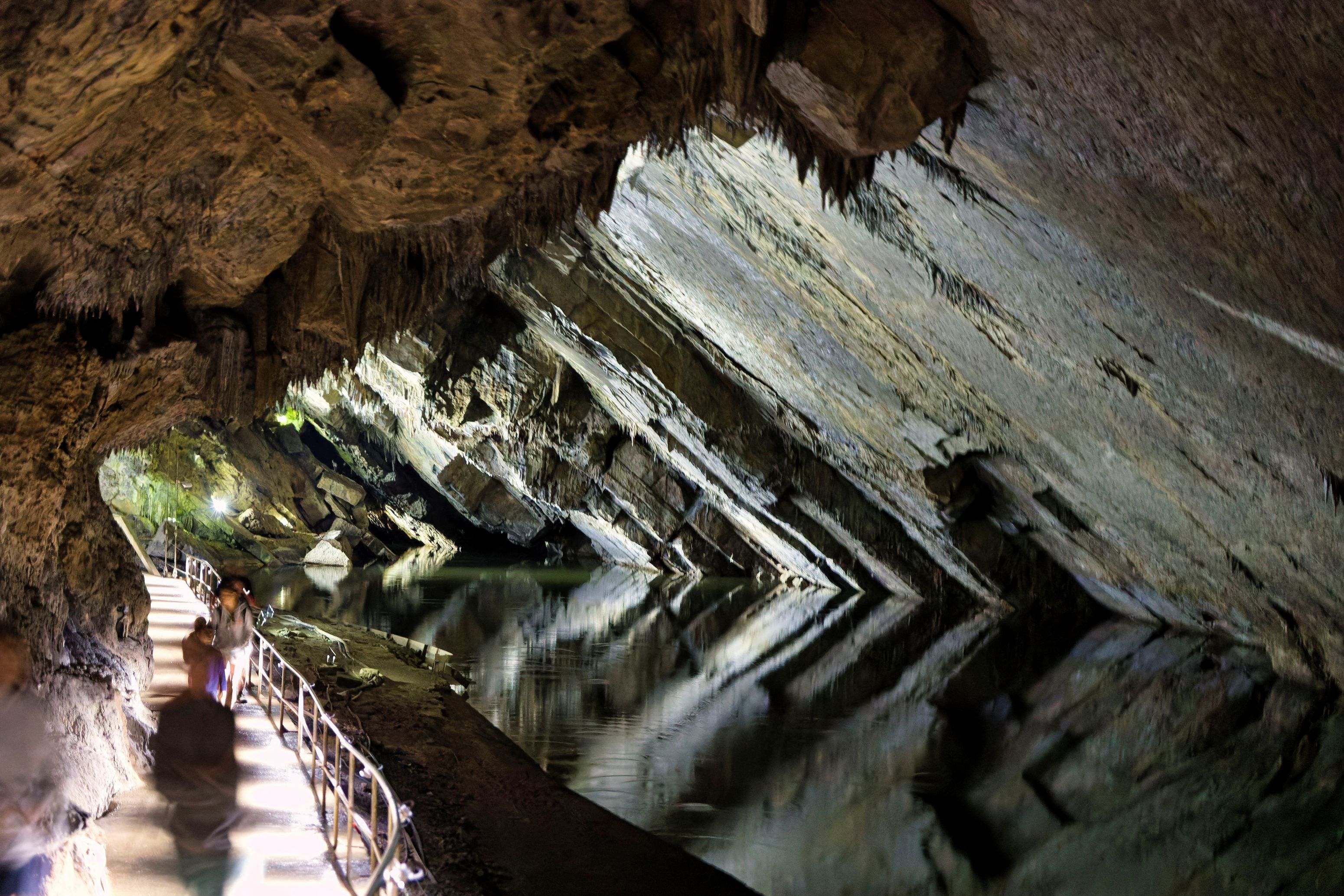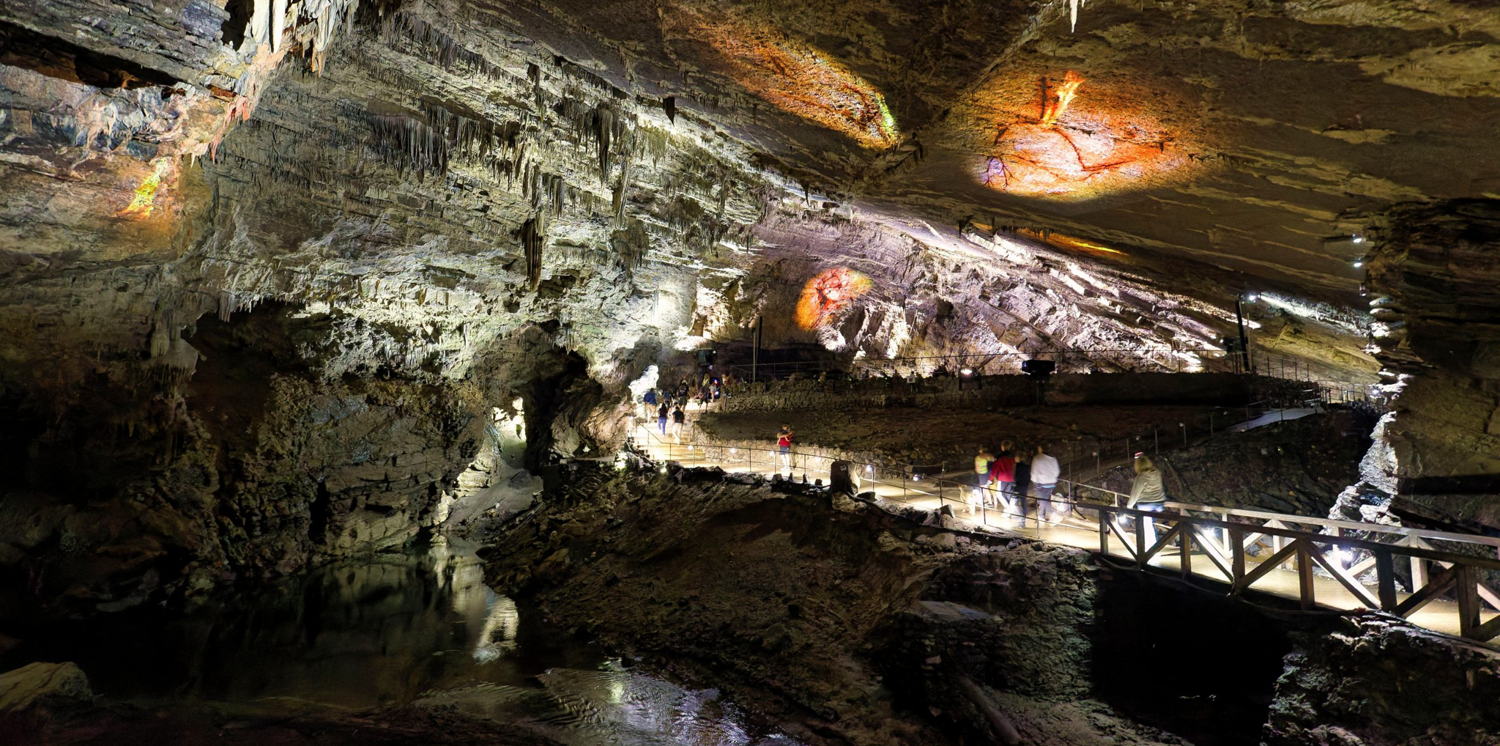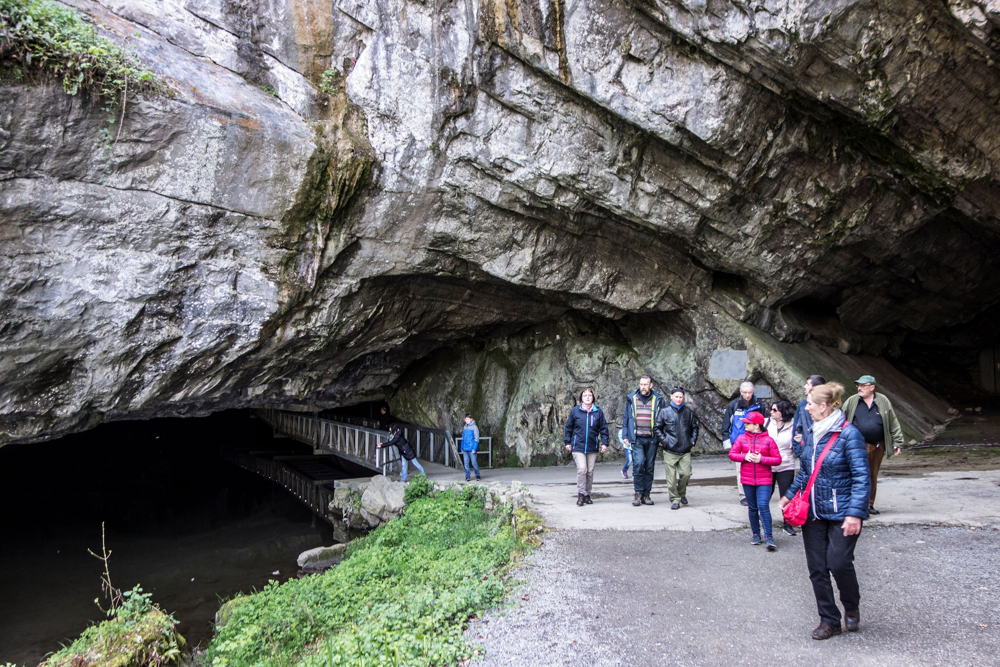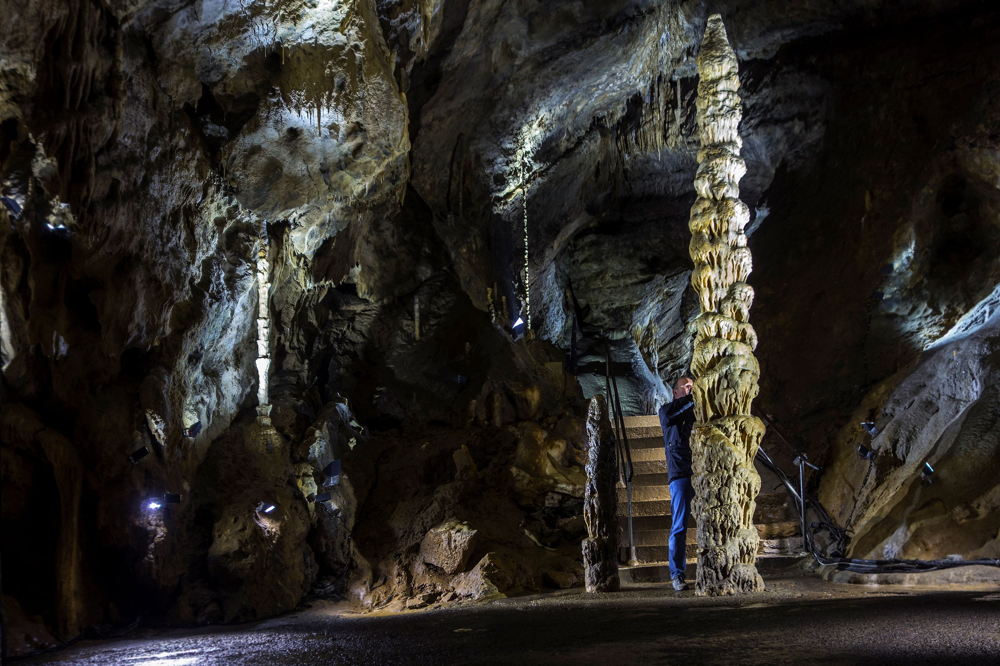The Caves of Han: a spectacular underground world beneath the Ardennes

Beneath the hills of Han-sur-Lesse in the Belgian Ardennes, the Caves of Han are one of the most extensive and famous cave systems in Europe.
Formed over thousands of years by the erosive action of the River Lesse as it cuts through the limestone of the Calestienne region, the system extends some 1,100m underground and features a series of large chambers and geological formations.
Archaeological evidence suggests that the caves were known to prehistoric communities, probably used for ritual purposes rather than habitation. Organised visits began in the 18th century, although early access was limited and relatively rudimentary. Electric lighting was introduced in 1897, improving visitor experience and safety.
Today, access to the caves begins with a short ride on a vintage tram from the village of Han to the cave entrance.
A 2km guided tour takes visitors through several named chambers, including the Scarab Room, the Minaret Hall - with a remarkable 5m stalagmite - the Secret Stalagmites and the Weapons Hall, which features a light and sound installation. The tour ends in the Dome Hall, one of the largest underground chambers in Europe, with a ceiling height of 62m.
Although the former boat passage through the cave has been replaced by a pedestrian bridge, visitors can still experience the remarkable acoustic effect known as the "cannon shot", a demonstration of the cavern's resonant properties.
The nearby PrehistoHan Museum displays archaeological and geological material recovered from the cave complex. Attracting around half a million visitors a year, the caves are both a natural feature of scientific interest and a longstanding part of Belgium's cultural and tourist landscape.
This article is part of a series looking at exceptional destinations throughout Belgium that are perfect for a day out. |
|---|
© PHOTO HEMIS VIA AFP
Related news




